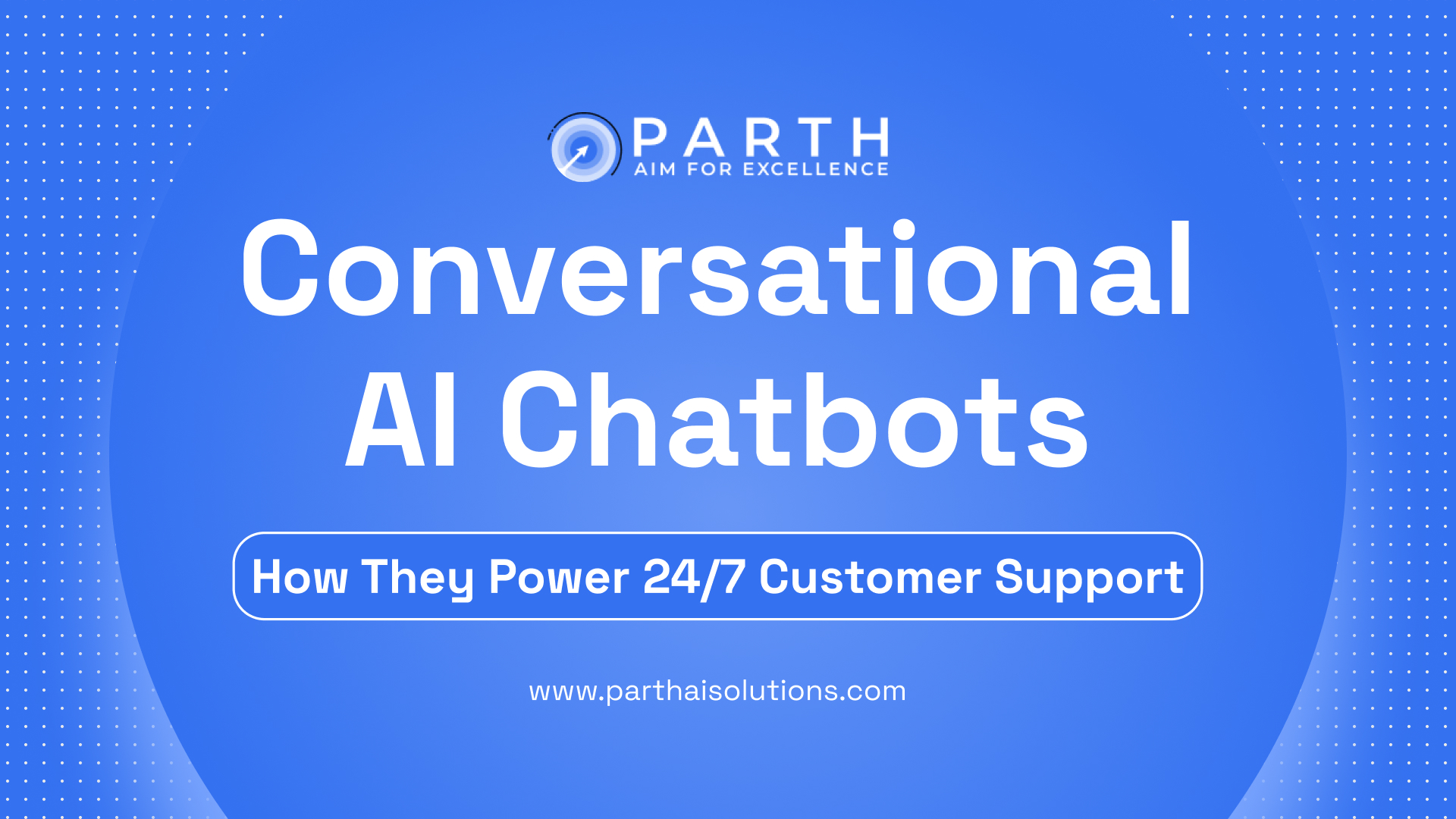In today’s fast-paced digital world, customers expect instant, seamless support across every touchpoint. Traditional service models often struggle to keep up with high volumes, inconsistent response quality, and limited availability. That’s where conversational AI chatbots—powered by Large Language Models (LLM) and Generative AI—are making a transformational impact.
These intelligent virtual assistants offer round-the-clock availability, personalized interactions, and scalable solutions. Whether you’re a startup or an enterprise, leveraging AI-powered chatbots can significantly enhance customer satisfaction while reducing support costs.
Here’s how they’re reshaping 24/7 customer support in 2025.
1. What Are Conversational AI Chatbots?
Conversational AI chatbots are advanced software systems that simulate human-like conversations using Natural Language Processing (NLP), Generative AI, and Large Language Models like ChatGPT. Unlike traditional rule-based bots, these AI systems understand user intent, context, tone, and even ambiguity—enabling them to handle complex queries, provide resolutions, and guide users toward actions like purchases or bookings.
Modern chatbots work across all major platforms: websites, mobile apps, messaging services (like WhatsApp and Facebook Messenger), and even voice assistants. Their omnichannel presence ensures customers receive consistent and helpful responses wherever they engage.
They don’t just respond—they proactively initiate conversations based on user behaviors such as time spent on a product page or cart abandonment. The result? Not just query deflection, but smart, human-like engagement that solves problems at scale.
2. 24/7 Availability: Redefining Customer Expectations
One of the most compelling benefits of conversational AI is its ability to deliver uninterrupted support. Unlike human agents limited by working hours, chatbots powered by LLMs operate 24/7—handling inquiries on weekends, holidays, or in the middle of the night.
For global companies, this translates into reduced response times and improved user satisfaction across time zones. Whether it’s tracking an order at midnight or getting product recommendations before dawn, these bots ensure no customer is left waiting.
Beyond answering questions, they can process orders, update delivery statuses, schedule services, or reset passwords—ensuring business continuity and operational efficiency around the clock. This consistent availability isn’t just a convenience—it’s often a competitive advantage.
3. Smart Knowledge Retrieval & Contextual Responses
One of the most powerful capabilities of modern AI chatbots lies in their ability to handle vast volumes of information—from product manuals and internal documentation to hundreds of webpages or training guides.
By leveraging LLMs and Retrieval-Augmented Generation (RAG) techniques, chatbots can scan and understand huge knowledge repositories in real time. Instead of generic responses, they provide contextually relevant answers by pulling insights directly from structured or unstructured data sources—without requiring the customer to dig through support portals.
For example:
- A user asking about a product return policy can be shown the exact section from the official help center.
- A customer troubleshooting a complex software issue can be directed to a step-by-step video tutorial.
- Internal support teams can use the same AI to navigate dense technical documentation faster than ever before.
These bots go beyond answering—they guide, reference, and connect users to deeper resources, making them incredibly useful for both end-users and internal teams.
4. Personalized Interactions at Scale
Thanks to the intelligence of Generative AI and access to historical customer data, chatbots can personalize interactions based on user behavior, past conversations, and preferences.
A returning customer might be greeted by name, with proactive updates about recent orders or relevant product suggestions. In an e-commerce scenario, the bot can recall cart activity, offer discount codes, or recommend accessories based on previous purchases.
Even the tone of conversation can be adapted based on prior sentiment—whether formal, casual, or empathetic. This level of personalization not only improves experience but also increases customer retention and lifetime value.
5. Reducing Support Costs Without Sacrificing Quality
AI chatbots help companies significantly reduce support costs by automating responses to repetitive Tier-1 queries—like FAQs, delivery timelines, appointment bookings, and policy questions.
Instead of scaling human teams, businesses can deploy bots that are trained once and continuously updated using real-time data, new scenarios, and customer feedback. With direct integrations to CRMs, order management systems, and inventory platforms, they ensure accurate, fast, and consistent responses—without human error.
Over time, this reduces the need for large customer service teams, minimizes onboarding and training overhead, and boosts overall efficiency. Many brands have
seen double-digit reductions in support costs within the first year of chatbot implementation.
6. Continuous Learning and Improvement
Conversational AI chatbots are not static tools—they’re built to evolve. Every interaction becomes an opportunity to learn, adapt, and improve.
Through feedback loops, user behavior analysis, and error handling, these bots continuously refine their understanding of user intent, expand their knowledge base, and even improve their conversational tone. Businesses can also manually train bots by reviewing conversation transcripts, identifying common gaps, and updating workflows.
Some chatbots also support agent assist features—where they suggest responses to human agents or smartly escalate complex cases with complete context, ensuring seamless handoffs and faster resolutions.
Looking ahead, advanced bots will increasingly demonstrate emotional intelligence—responding empathetically to frustrated users or recognizing sarcasm and sentiment. This brings them closer than ever to human-like service quality.
FAQs on Conversational AI Chatbots
Q1. Can chatbots fully replace human agents?
A: Not entirely. While they handle most repetitive queries efficiently, complex, emotional, or sensitive interactions still benefit from human involvement. A hybrid model offers the best balance.
Q2. Are AI chatbots only for large enterprises?
A: No. Many platforms provide cost-effective, scalable chatbot solutions tailored for startups, SMEs, and large organizations alike.
Q3. How secure is customer data handled by chatbots?
A: Reputable platforms implement end-to-end encryption, access controls, and comply with data regulations like GDPR, ensuring high standards of security.
Q4. Do chatbots support multiple languages?
A: Yes. Modern conversational AI tools can seamlessly converse in multiple languages, making them ideal for global and multilingual audiences.
Q5. How long does it take to deploy a chatbot?
A: A basic chatbot can go live within a few days, while advanced, fully integrated bots may require a few weeks depending on scope and use cases.

